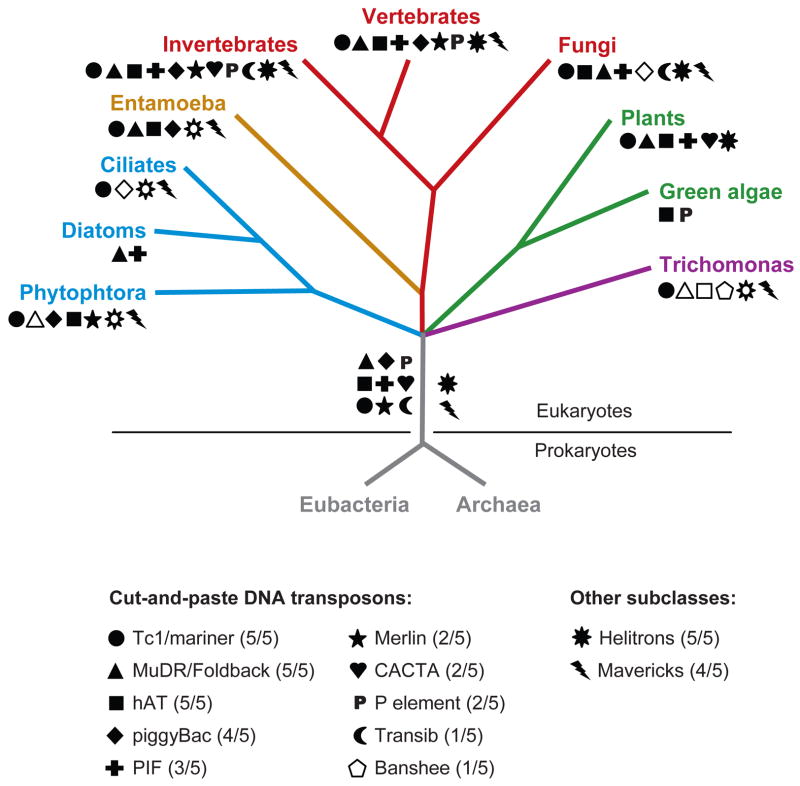Figure 1.
Distribution of the major groups of DNA transposons across the eukaryotic tree of life. The tree depicts 4 of the 5 “supergroups” of eukaryotes (based on Keeling et al. 2005**AU: Please check: 2005 reference is listed only. 2005 is ok) where DNA transposons have been detected. The “unikonts” are represented by the opisthokonts (vertebrates, invertebrates, and fungi) and by the Ameobozoa Entamoeba, the Chromoalveolates by the oomycete Phytophtora infestans, the diatom Thalassiosira pseudonana and several ciliates, the Plantae by the unicellular green algae Chlamydomonas reinhardtii and a broad range of flowering plants, and the Excavates by the parabasalid Trichomonas vaginalis. The occurrence of each superfamily/subclass of DNA transposons is denoted by a different symbol. The data were primarily gathered from the literature (references available upon request). Open symbols denote unpublished observations gathered by the authors or from Repbase (http://www.girinst.org). The taxonomic breadth of the different groups among the 5 supergroups of eukaryotes is shown in parentheses. These data suggest that 11 of the 12 major types of DNA transposons were already diversified in the common ancestor of eukaryotes.

